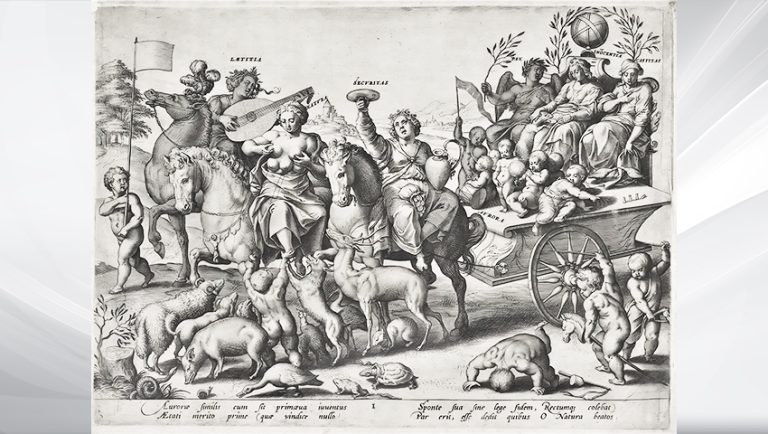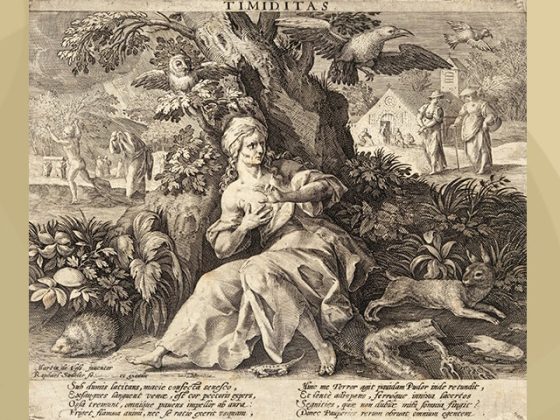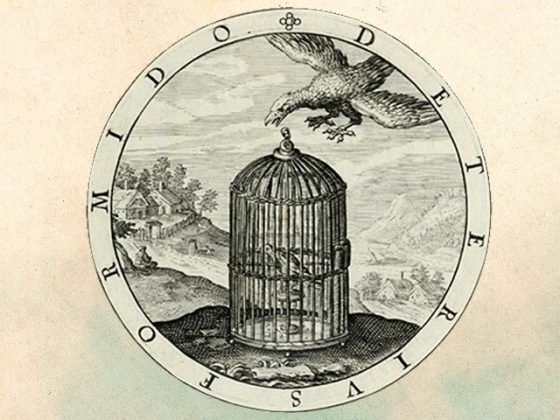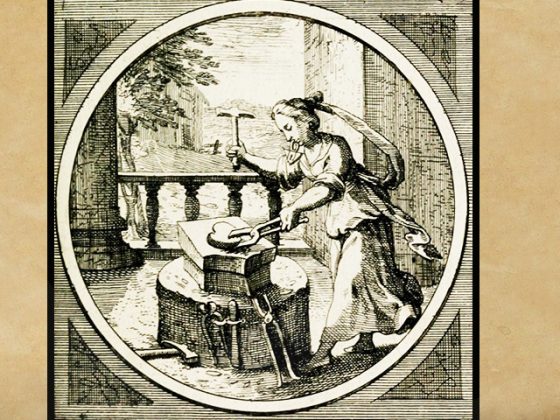Dearest friends:
I am pleased to send you the esoteric description of the present engraving that was titled in its time as:
CHILDHOOD – DAWN
This engraving was made by an artist named Hieronymus Wierix, who lived in Antwerp ─Belgium─ between 1553 and 1619. His work really has contents that are well worth scrutinizing for us to know, not only the animic concerns of the time, but to warn the whole of humanity about interesting things.
The harshest reality tells us that our life is a pilgrimage that begins precisely in our childhood and, like other ages that we will be living, is surrounded by various circumstances that the artist wanted to leave reflected in this work.
Although it seems very strange to see a woman who instead of two breasts or chests has a total of five, what he wants to represent with that lady are the five aspects of the Cosmic Mother that nourish all forms of creation. She is our Virgin Mother. It is She who brings us into the world in her hour and in her time, and such is the reason why at her side another woman appears who carries on her legs a sack with many coins. This other woman is the representation of karma, which brings to us, in our existence, certain dharmic values ─rewards─ or karma ─punishments─. Such is the reason why the woman with the coins is accompanied by the Latin word SICVRITAS, wanting to indicate the security, protection, health, wealth or poverty in which we will experience our trajectory.
It is interesting that this woman with the coins carries in one of her hands a plate or saucer that has a base as if it were one of the plates of the cosmic scale, and in this case it is the dish that symbolizes the dharma. It is also this woman who carries an amphora in her other hand. Such an amphora contains the waters of life that determine the Bobbin-Kandelnost values that will help us or not to withstand the vicissitudes of our pilgrimage depending on the use we make of those values.
Above the Divine Mother, whom we have already explained, we observe the word NATVRA alluding to Nature and its various manifestations.
From the breasts of the Divine Lady come fluids of milk to indicate that She nourishes the three kingdoms: animal, vegetal and human. That is why children, deer and other creatures rush to collect in their mouths the precious liquid that gives life.
Behind these two women just described appears the carriage that transports them. Mysteriously, as it could not be otherwise, such a carriage is inscribed with the Latin word AURORA. We must interpret such a word as the dawn of our existence.
In such a carriage some children are seen playing, because in truth in our childhood we only want to play. We are not yet stressed by the problems that later, as we grow up, will overwhelm us in our own lives.
Behind those children we observe another maiden who carries on her head the Latin word INOCENTIA, and it is so, friends, in our childhood we enjoy innocence because the psychological aggregates still do not control our organic machine and our psyche.
On the right side of the representation of innocence a gentleman appears wearing on his head the Latin word PAX. This symbolizes the peace enjoyed by infants and all those who have managed to regain innocence with the fruitful psychological work they have done upon themselves. This aforementioned gentleman wears on his head a crown of laurels to indicate to us that peace is the wonderful gift enjoyed by all those who have eliminated the ANIMAL EGO.
On the left side of the woman who symbolizes innocence we see another woman that is adorned with the Latin word CASTITAS. Beyond any doubt, this word alludes to the legitimate chastity of body and soul that can be reached by the brave spirits who seek the Kingdom of the Being. Without chastity in mind, heart and sex it is impossible to enter the Kingdom of the Unmentionable, so it is written.
It is curious to note that the women who represent innocence and chastity are joined by laurel branches. This augurs that these virtues will lead us to esoteric triumph or hermetic triumph.
Returning now to the woman who is feeding her mother's milk to the creatures of Nature, we can observe, next to her and behind her, a troubadour who is playing a lute. This gentleman in this engraving is accompanied by the Latin word LAETITIA, which must be translated as ‘rejoicing', ‘joy'. This word reminds us of the biblical phrase that tells us: “There is more joy in heaven for one repentant sinner than for a thousand righteous who have nothing to repent of.” Let us reflect on these things, esteemed reader.
At the front of this carriage an infant carrying a flag is advancing decisively. This infant represents the Adepts who have managed to bear witness to the inner Great Work and therefore they carry a flag or banner.
In the center of the engraving, in the distance, we see a castle that is none other than the philosophical abode of our inner king.
Nor should we overlook the man who is near the wheels of the carriage and appears prostrating before God repenting of having lost his life idling. Such is the reason why we see near him a whip with which, surely, he has been whipping himself seeking the forgiveness of the BEING.
Finally, patient reader, here is the obvious proof according to which much of esotericism still remained shown –in centuries during the Middle Ages– to the public by esotericist or hermetic painters, but, unfortunately, all covered with the veil of hermeticism.
There is a final sentence that accompanies our study and it is the following:
“Aurorae similis sit primeval Juventus aetati merito prime quae vindice nulla sponete sua sine lege fidem, rectumq colebat“.
We must interpret this sentence in this way:
‘Youth, similar to the dawn, being in the first part of life, as the first benefit'.
I add for you, finally, a few sentences to be reflected upon:
“There is nothing so terrible as to lose one’s innocence.”
Chateaubriand
“The great secret of being happy is to be innocent.”
Focilides
“The union of love and innocence seems to be the earthly paradise. It is the most pleasant bliss of life.”
Rousseau
“The strongest force is an innocent heart.”
Victor Hugo
“Innocence is always surrounded by its own splendor.”
Massillon
MAGNIFICAT ANIMA MEA DOMINUM
─‘My soul magnifies the Lord’─.
KWEN KHAN KHU





